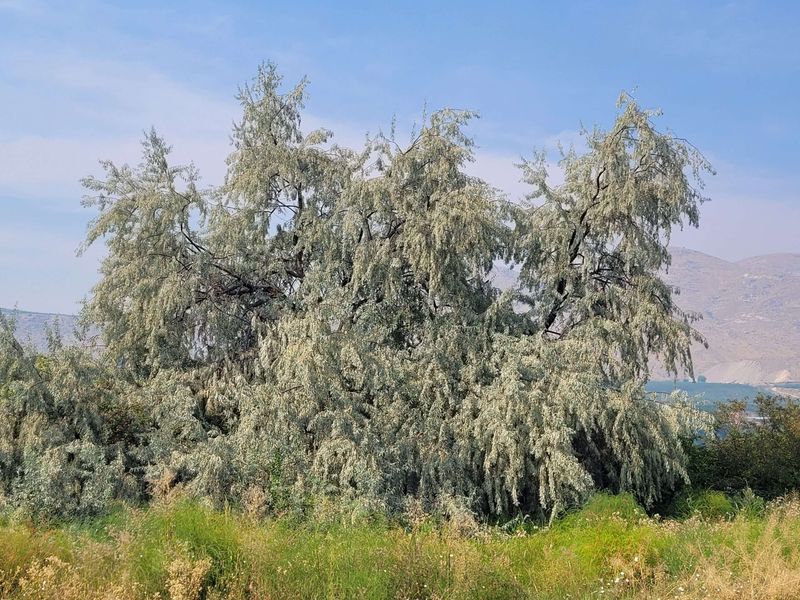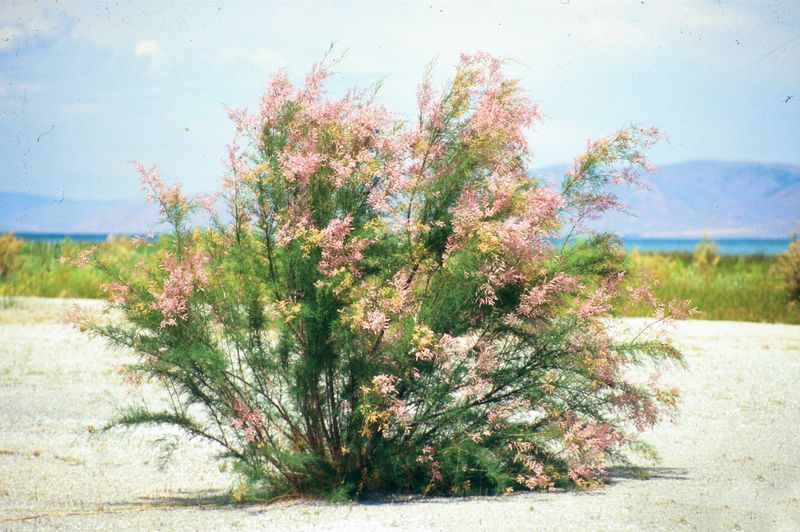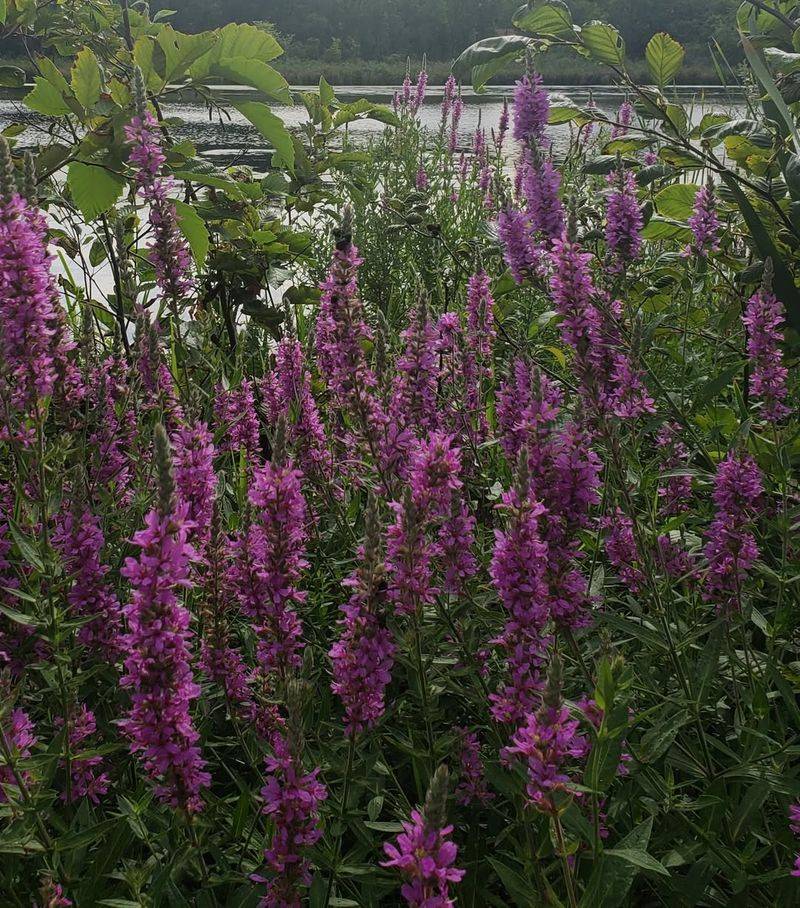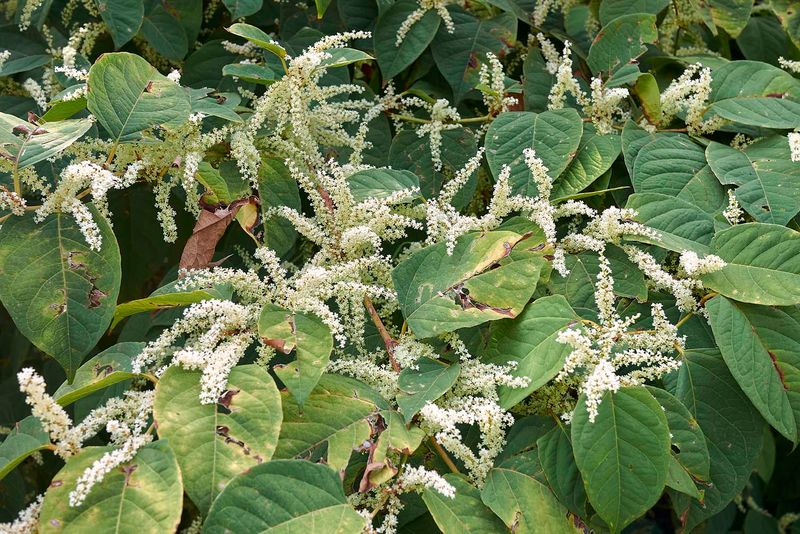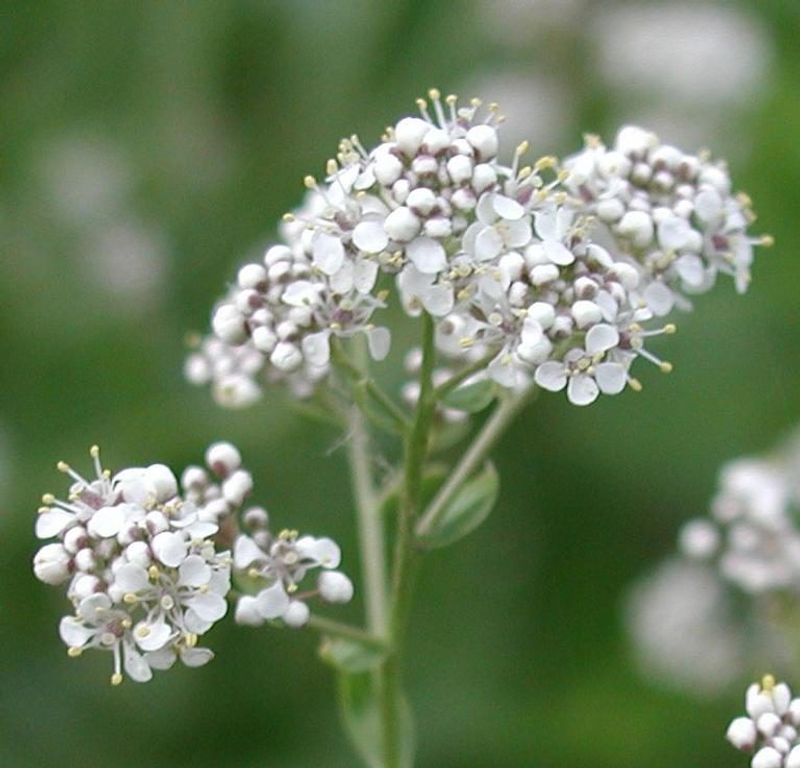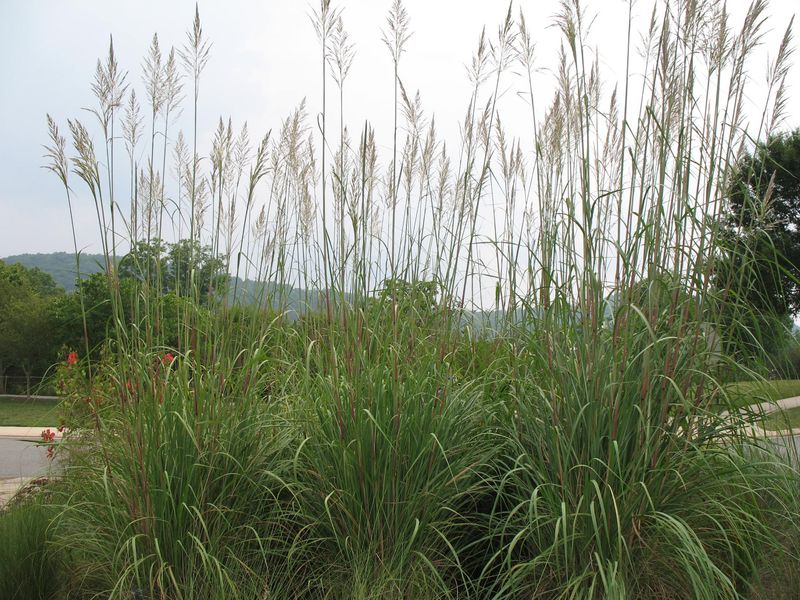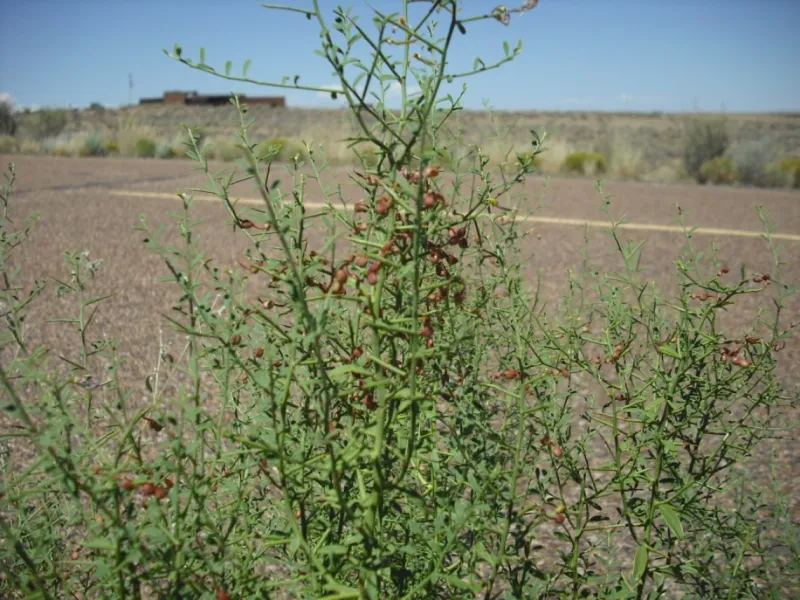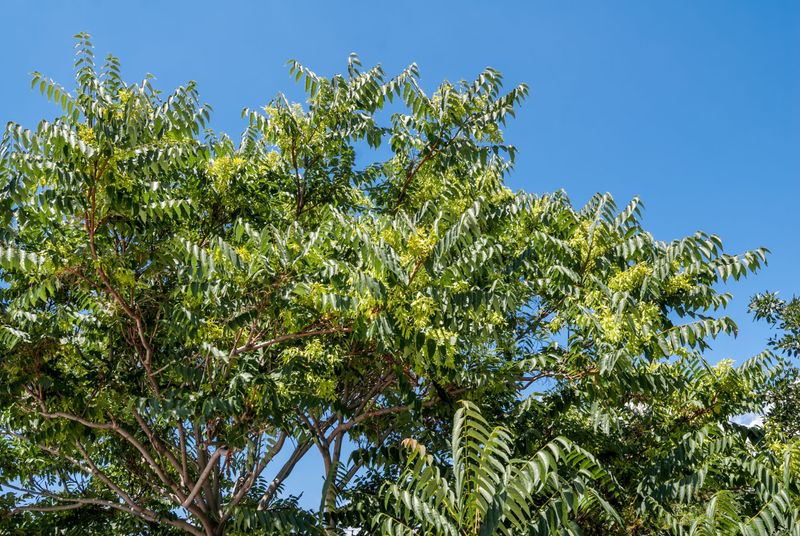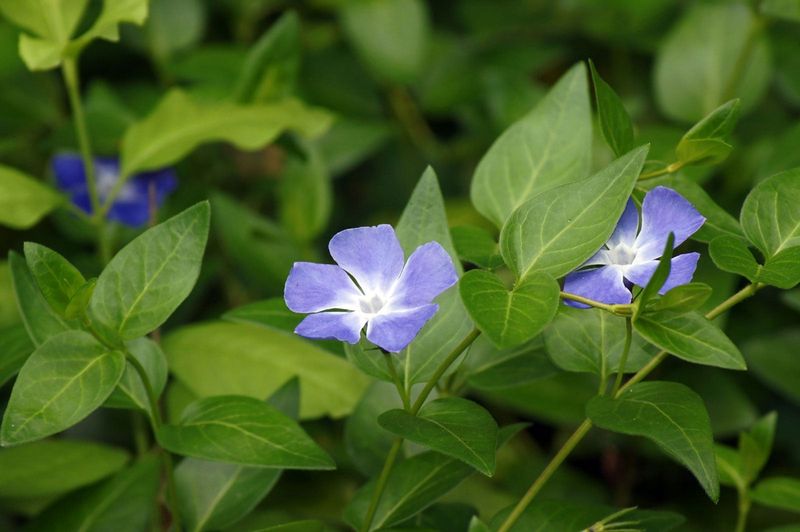Some garden favorites in New Mexico may soon find themselves on the wrong side of new rules as the state works to protect its land from fast-spreading, invasive plants. What looks harmless in a yard can quickly take over fields, waterways, and native habitats once it slips beyond the fence line.
Many homeowners grow these plants without knowing how aggressively they move or the damage they cause in the wild. As proposed restrictions move closer to reality, understanding which species are under scrutiny can help gardeners stay ahead of changing laws and keep their landscapes both beautiful and compliant.
1. Russian Olive Trees
Once prized for windbreaks and shade, Russian olive trees now threaten New Mexico’s native plants. Their aggressive root systems steal water from nearby vegetation, making them particularly problematic in our dry climate.
Wildlife managers worry these trees crowd out cottonwoods along riverbanks. Birds spread their seeds everywhere, creating new invasions constantly. Removing mature trees costs thousands of dollars for property owners.
Consider planting native alternatives like desert willow instead.
2. Saltcedar (Tamarisk)
Saltcedar drinks water like there’s no tomorrow, which spells disaster for desert states. A single mature plant can gulp down 200 gallons daily during summer months.
Ranchers and farmers particularly dislike this thirsty invader because it lowers water tables. Its tiny pink flowers look pretty but produce millions of seeds annually. Dense thickets replace native willows and provide poor habitat for wildlife.
Eradication programs spend millions fighting this persistent plant across the Southwest.
3. Purple Loosestrife
Gardeners love purple loosestrife for its stunning magenta blooms, but wetland ecosystems hate it. Each plant produces over two million seeds that spread through wind and water.
Marshes and irrigation ditches become choked with dense stands that nothing else can penetrate. Native cattails and bulrushes disappear when this aggressive grower takes over. Ducks and other waterfowl lose important food sources.
Several neighboring states already ban this beautiful troublemaker completely.
4. Japanese Knotweed
Imagine bamboo on steroids, and you’ve got Japanese knotweed. Its hollow stems push through concrete, asphalt, and even building foundations with shocking force.
Underground rhizomes spread fifteen feet in all directions, making removal nearly impossible. Tiny root fragments regrow into full plants, frustrating homeowners everywhere. Property values drop when mortgage companies discover infestations.
England spends millions annually fighting this plant. New Mexico wants to avoid similar expensive battles by banning it now.
5. African Rue
Ranchers call African rue the worst weed they’ve ever seen on grazing lands. Cattle won’t touch it because the plant contains toxic alkaloids that sicken livestock.
Each plant produces thousands of seeds that remain viable for decades in soil. Dense patches replace nutritious native grasses that animals need. The yellow flowers might look cheerful, but they signal trouble for agriculture.
Controlling existing infestations costs New Mexico ranchers thousands annually in lost forage and herbicide treatments.
6. Perennial Pepperweed
Don’t let the innocent-sounding name fool you. Perennial pepperweed invades agricultural fields, pastures, and wetlands with equal enthusiasm.
Root systems reach twenty feet deep, accessing water other plants can’t reach. White flower clusters produce thousands of seeds that stick to equipment, animals, and clothing. Farmers struggle because it tolerates herbicides that destroys most other weeds.
Alfalfa growers particularly despise this invader since it contaminates hay crops. Early detection remains the best control strategy available.
7. Yellow Toadflax
Yellow toadflax resembles cute miniature snapdragons, which explains why gardeners originally planted it. However, its charming appearance hides a ruthless competitor.
Creeping roots spread horizontally underground, forming dense colonies that exclude native wildflowers. Each plant produces up to 30,000 seeds that remain dormant for years. Pollinators visit the flowers but get little nectar reward.
Mountain meadows and forest openings face particular risk. Once established, colonies persist for decades despite control efforts.
8. Siberian Elm
Fast growth made Siberian elm popular for quick shade, but speed comes with serious problems. These trees break apart during windstorms, damaging property and power lines.
Seeds sprout everywhere, creating maintenance nightmares in gardens, gutters, and sidewalk cracks. Weak wood means constant pruning and cleanup. Roots invade sewer lines and foundations.
Many cities now discourage planting them entirely. Native alternatives like desert willow provide better long-term value without the headaches.
9. Ravenna Grass
Landscape designers adore Ravenna grass for its dramatic ten-foot plumes that sway in breezes. Unfortunately, those beautiful seedheads contain millions of wind-dispersed seeds.
Roadsides and disturbed areas quickly fill with unwanted clumps. Sharp leaf edges cut skin and eyes during removal attempts. Fire danger increases because dry foliage accumulates inside clumps.
California already restricts this ornamental after costly wildfire incidents. New Mexico officials want to prevent similar problems before they start.
10. Camelthorn
Vicious thorns up to two inches long make camelthorn every gardener’s nightmare. Puncture wounds from these spines often become infected and cause serious pain.
Deep taproots access groundwater far below surface, allowing plants to thrive during droughts. Dense thickets block access to waterways and recreational areas. Livestock and wildlife suffer injuries from the brutal spines.
Removal requires heavy equipment and protective gear. Prevention through early detection saves enormous trouble and expense later.
11. Tree Of Heaven
Despite its heavenly name, this tree creates hellish problems for property owners. Roots produce chemicals that poison surrounding plants.
Suckers sprout everywhere, forming dense groves that crowd out everything else. Cutting triggers even more aggressive sprouting. Male flowers smell like rotting garbage during bloom season.
The tree hosts spotted lanternfly, a destructive pest threatening agriculture. Many eastern states now require removal, and western states want to avoid similar infestations.
12. Periwinkle (Vinca)
Periwinkle seems like the perfect ground cover with its glossy leaves and cheerful blue flowers. Garden centers sell it everywhere for erosion control and low maintenance landscaping.
However, it escapes cultivation easily and smothers native forest floor plants. Dense mats prevent tree seedlings from establishing. Nothing grows underneath once periwinkle takes hold.
Removal proves extremely difficult because stems root at every node. Choose native ground covers like trailing raspberry instead for similar benefits.


